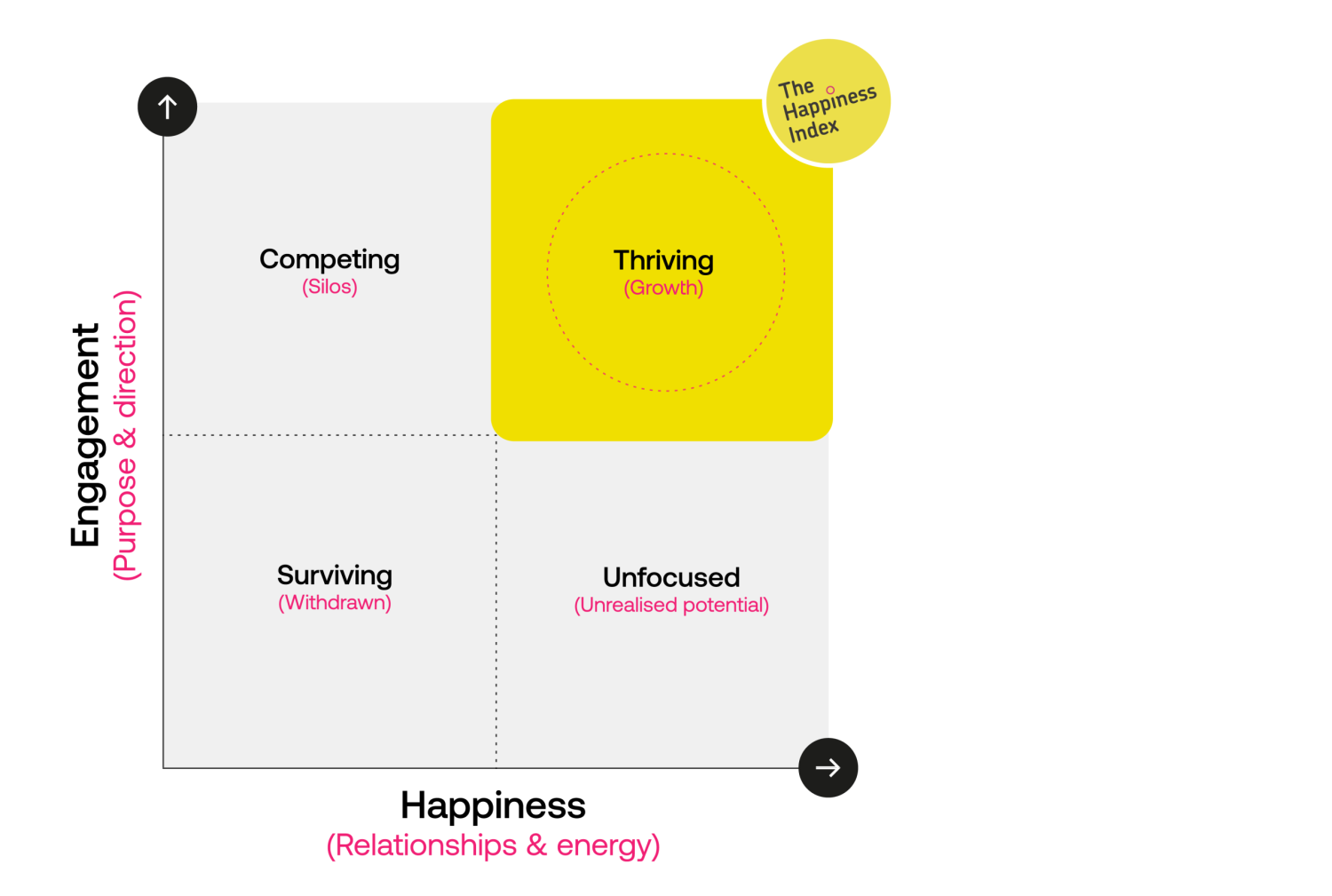Menu


I want to tackle a topic that I know is constantly on the minds of strategic people leaders: the real, hard-nosed return on investment of employee engagement and happiness. People leaders understand that people drive profit. The ROI of employee engagement and happiness often needs a clear demonstration to get boardroom buy-in.
Often, people think happiness is a fluffy metric. Our data shows that engagement and happiness are distinct yet equally vital. If you look at our ‘Survive to Thrive’ model below, we can see that:

Employee engagement and happiness have been seen as intangible. Traditional surveys lack the depth to understand employee emotion and sentiment. They yield broad, unactionable data.
The Happiness Index can move beyond the buzzword. We can translate thriving cultural energy into tangible metrics for your CFO and CEO. That’s the promise of understanding and investing in workplace engagement and happiness.
Good vibes don’t suffice for senior leadership. You need numbers proving the ROI of genuine employee engagement and employee happiness. Want to see the potential impact? Explore our ROI calculator:
The ROI of employee engagement and happiness isn’t a single, easily calculated figure. It’s a multifaceted phenomenon, a multiplier effect that ripples through various aspects of your organisation, ultimately impacting profitability. Let’s break down some of the key areas where a truly engaged and happy workforce delivers a substantial return:
So, how do you move beyond the anecdotal and start quantifying these benefits? This is where the power of data and insights comes into play. Traditional methods often fall short because they don’t delve into the ‘why’ behind the numbers. They might tell you that engagement or happiness is low, but they don’t provide a nuanced understanding of the underlying concerns.
A more sophisticated approach to understanding workplace engagement and happiness is essential. We need tools that go beyond surface-level satisfaction and tap into the emotional drivers of engagement. This includes:
For a deeper understanding, the right platform is key. It enables targeted interventions based on real-time insights. Explore our award-winning platform:
Once you have the data and the insights, the next crucial step is to translate them into a compelling business case for investing in employee engagement initiatives. Here are some strategies for demonstrating the ROI:
Strategic leaders must present these HR metrics and insights, including clear ROI, to demonstrate the impact of employee happiness and employee engagement on company goals and profitability.
Understanding and leveraging the ROI of investing in your culture isn’t just about numbers; it’s about recognising the fundamental human element in business success. When employees feel valued, supported, and genuinely happy in their work, they bring their best selves. This creates a positive cycle of productivity, innovation, and ultimately, increased profitability.
For strategic people leaders, the challenge lies in moving beyond the traditional metrics and embracing a more holistic and data-driven approach to understanding their workforce. By leveraging the right tools and strategies to gather meaningful insights into workplace engagement and happiness, you can unlock the true potential of your people and demonstrate the undeniable ROI of employee wellbeing.
Treating cultural investment as a core business strategy drives profitability and provides a key differentiator. Quantifying its impact secures investment and builds a thriving, profitable organisation.
Related articles
Get in touch for a quick chat with one of our experts to see how we can help you.
Take our benchmark to map where your organisation is now, and where it needs to be.